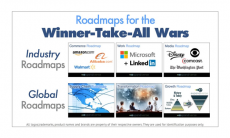It’s been about two months since Apple announced changes meant to better protect children who use their products from online predators and other threats. Perhaps I’m too naive in thinking that Apple’s intentions were honorable, but regardless of the company’s intentions, the backlash was swift, merciless and not unreasonable. There’s a long history of companies not necessarily keeping children’s best interests in mind, from Facebook’s current Instagram troubles to the Joe Camel character selling cigarettes back in the day.
To summarize, the protections Apple announced may have been helpful in helping keep kids safer, but they were pretty terrible at protecting everyone’s privacy. Consumers have learned too many times that not every tool is always used as intended and Apple’s planned changes created a back door that could have easily been exploited.
That reality is why many consumers won’t have a smart speaker in their homes, even though they are incredibly useful tools. We’ve gotten to a point where even companies focused specifically on digital safety and security aren’t above suspicion (like VPN companies that have been purchased by firms with potential links to malware.)
As marketers, it should go without saying, we have to assure our clients and prospects that we are not one of the bad guys, that our practices are on the up-and-up. Given the state of the world, it’s worth noting that before we assure our clients and prospects of this, we need to be very certain ourselves that we are staying on the right side of the moral and legal line as we do everything we can to expand our audience, engage our prospects, and win our customers’ hearts.
Invest Appropriately in Tools and Technology
Data doesn’t magically protect itself. Hardware and software matter, so it makes sense to invest in tech that will keep your data secure. Just as important is having proper processes in place.
That should include training. The human component of security is arguably more critical than the technology. More on that below.
Honesty and Transparency
Sunshine is the best disinfectant, as the saying goes. Own your mistakes. Yes, given the rampant double-speak consumers hear, they may not believe you. But they’re certainly not going to believe you in the future once even the slightest shred of evidence comes to light indicating that you weren’t entirely forthcoming in the past. Unless your audience is entirely replaceable, you’re playing with fire if you aren’t fully honest about any breaches or other issues.
Create Clear Internal Policies
I mentioned above that we needed to be clear ourselves which side of the line we were staying on. It’s also critical to convey that clearly and as concisely as possible to our internal and external teams. A “win at all costs” culture can be great for the top line in the short term, but it inevitably leads to questionable decisions that invariably lead to unhappy consumers and inquisitive regulators.
Those decisions flow from the top down. Client-facing employees will go along to get along, and if the expectation from above is that only the quarterly numbers matter, you can expect lots of corners get cut.
Be sure you are coordinating efforts across internal and external teams. Your vendors may be as big a component of your security as your IT staff.
Build in redundancies and create checkpoints. Your goal should be to make it impossible for one bad actor to easily go undetected.
None of these steps are fully guaranteed to work on their own, but taken together, they do provide greater assurance that you won’t find yourself playing defense against consumers or investigators who feel that you’ve abused the trust and legal rights of your audience.






